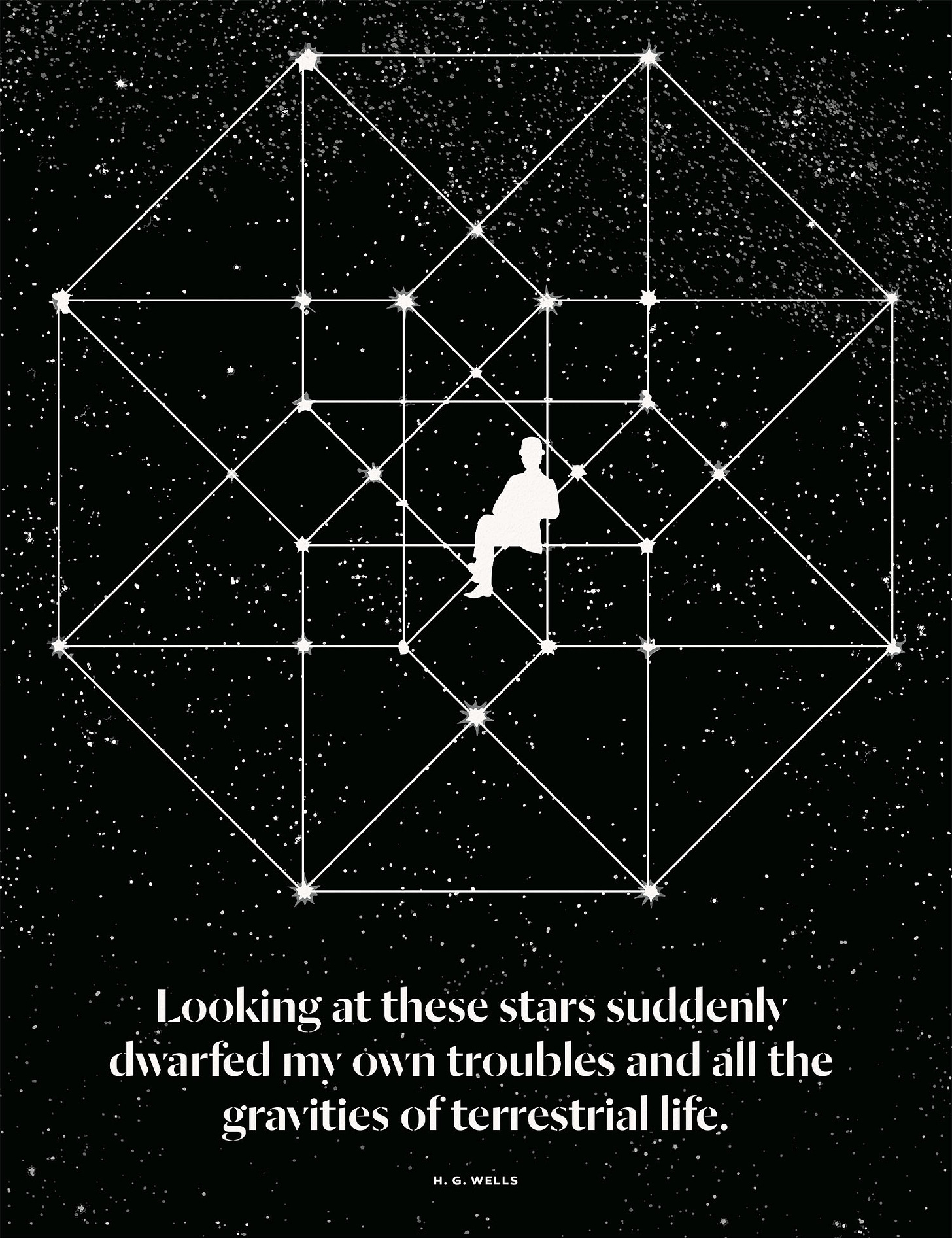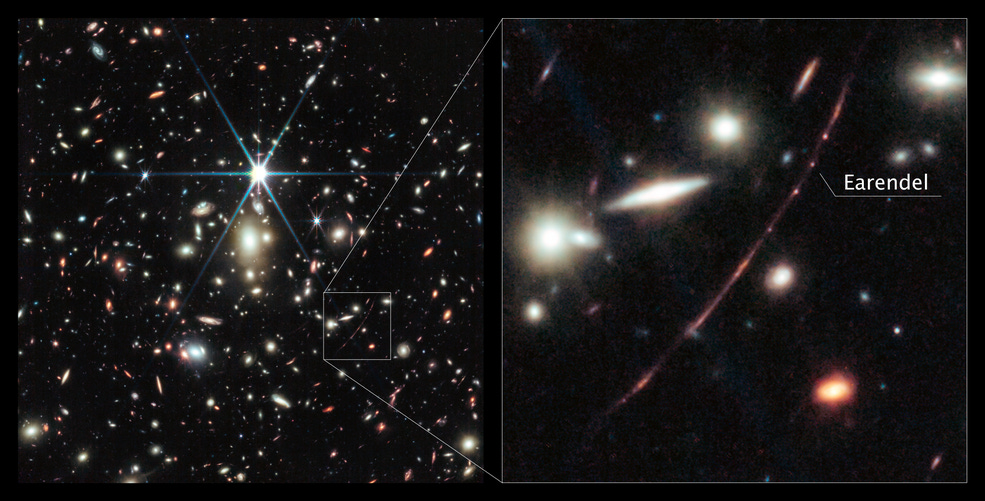
H.G. Wells on Where Science Meets the Spiritual
“Looking at these stars suddenly dwarfed my own troubles and all the gravities of terrestrial life.” - H. G. Wells
A few weeks ago, NASA announced that my favorite piece of tech, the James Webb Space Telescope, peered at a star named Earendel at a distance of 28 billion light years away, making it the oldest star ever observed by human beings. It formed within one billion years of the big bang, and is a million times more luminous than our sun.
The science behind this is so incredible that it “dwarfed my own troubles” for a bit and made me feel something I don’t often feel here on earth these days: wonder and awe.
But how could they possibly see something so remote? Prepare to tremble, mere terrestrials; there is a phenomenon known as “gravitational lensing” where clusters of galaxies warp the light of distant objects behind them like a magnifying glass. It is effectively, the universe’s own distant telescope on even more distant objects. One such galaxy cluster (WHL0137-08) warps the light from the Sunrise Arc galaxy billions of light-years behind it. With Webb, we are peering through a man-made telescope into, um like, God’s telescope to peer at a star so distant and therefore old, that it is within a cosmological stone’s throw of the origin of the universe. Even in that remote galaxy, most of the star fields are smeared and distorted by the lensing. But this one magical star aligns perfectly in focus for our discovery from a telescope on the dark side of the moon.
If you think that’s cool, just wait until you hear about the name “Earendel,” because this is where it gets literary. Taken from the Old English for “Rising Star,” which was Venus, the name dates back to 8th century Anglo-Saxon mythology as part of a mythological origin story when the mighty Thor carried Aurvandill the Valiant across the Icy Stream. But Aurvandill’s toe was sticking out and got frost-bite. So Thor broke it off and tossed it into the sky (because you know, Thor’s gonna Thor). And that toe is the Rising Star, my friends. If that ain’t literary enough, the Old English name makes it into The Silmarillion, J.R.R. Tolkein’s origin story of Middle Earth, where a half-elf character named Eärendil the Mariner wears a Silmaril, a jewel of pure light, on his brow.
The original appearance of the word dates back to around 800 in a fragmentary collection of Old English religious poems called Crist A:
Hail Earendel, brightest of angels,
Sent to men over middle-earth,
And true radiance of the sun,
Fine beyond stars, you always illuminate,
From your self, every season!
And so in both a scientific way and a literary way, we have come full circle. Our ancestors gazed with wonder and awe on the heavens; they believed the stars to be gods or angels (or divine frozen toes, but still), and created a cosmological origin story for the universe. Maybe they weren’t “correct” about what powers unified and explained all things, but they were right that something did. Centuries later, we now call that thing science, and while it seems to be a better explanation, it is still by no means “correct.” With its power, we their descendants have learned to bend technologies to our will and peer into the past. And then, we discover the universe’s own version of this technology peering back at us. Our modern, hyper-rational-materialist-scientific selves thus gaze closer than ever at our own origin story, only to rediscover our wonder and awe.
Because this illustration was inspired by H.G. Wells, I will allow myself the indiscretion of sharing this scrappy little sci-fi short film about a telescope’s strange ability to traverse both distance and time. I think Wells would have liked it for its ambitious theme, and I did too.



